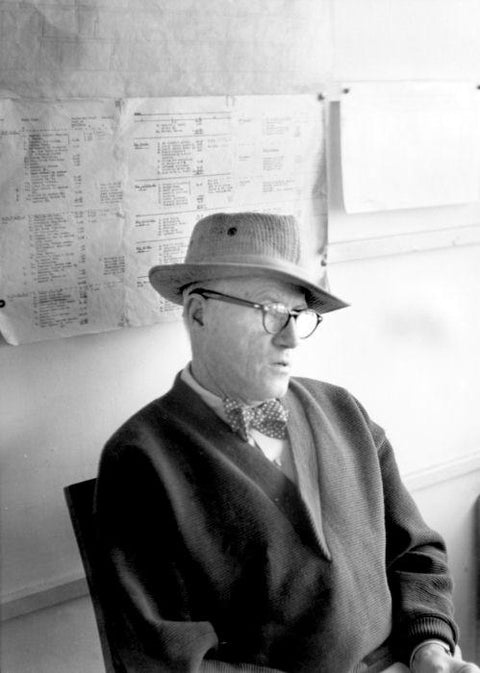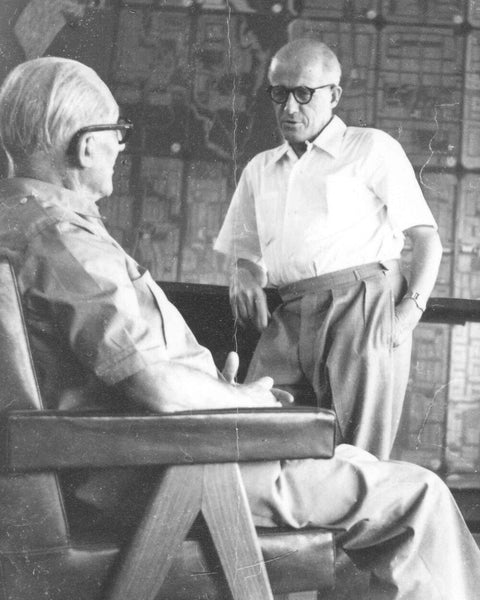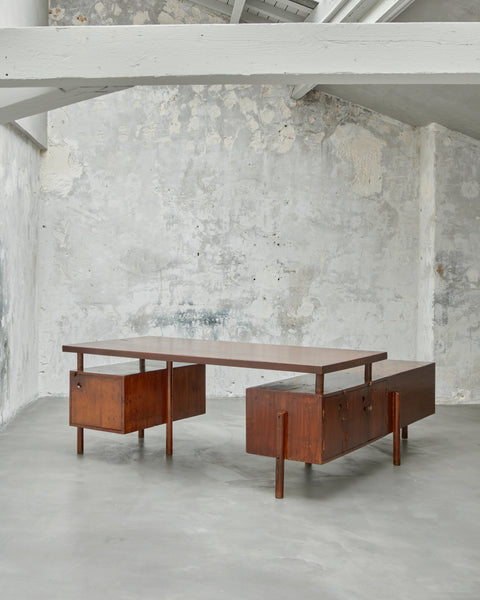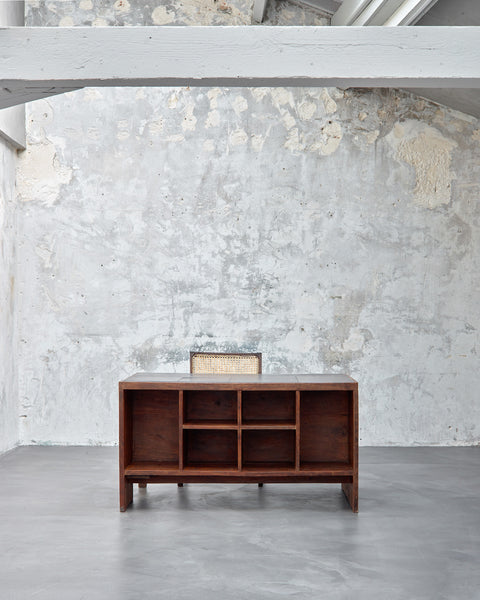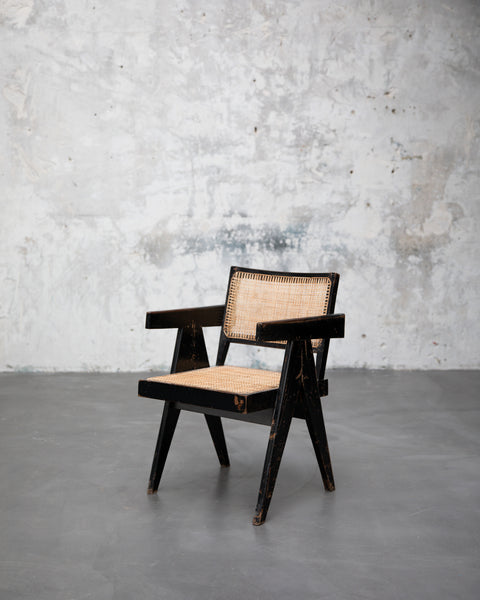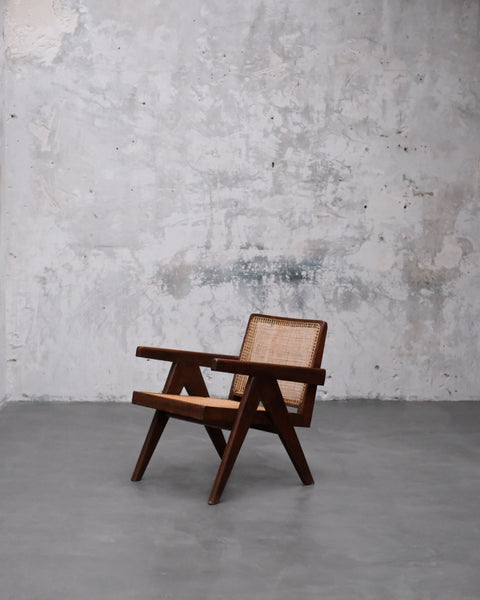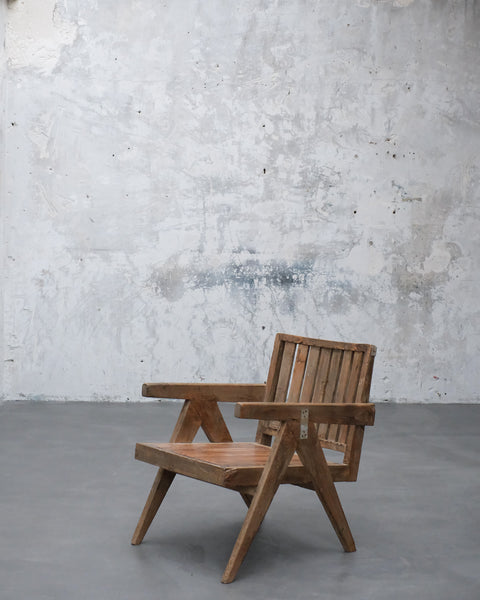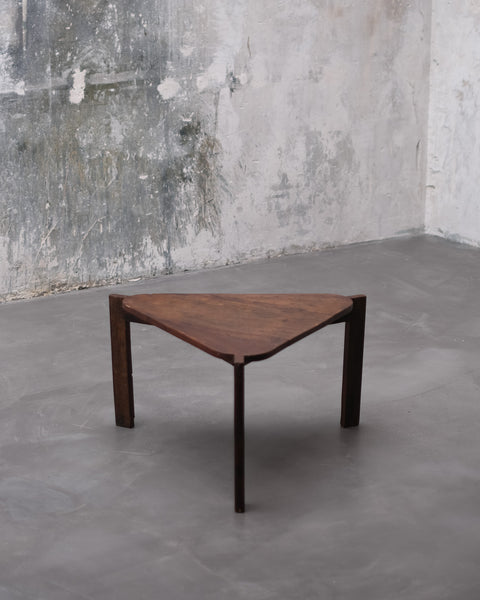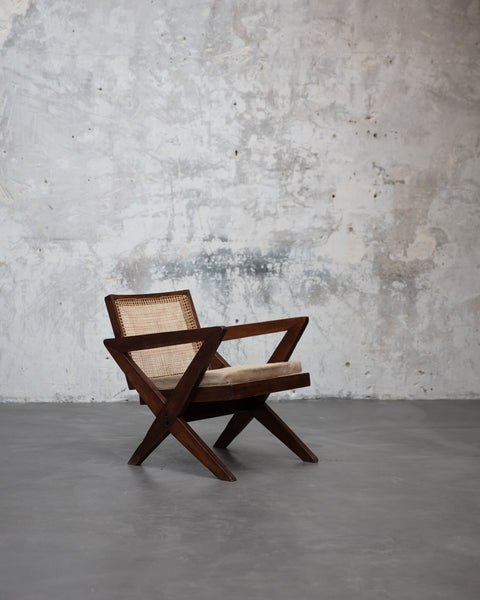Pierre Jeanneret was born in 1896 in Switzerland. Jeanneret pursued his education at the École des Beaux-Arts in Geneva. After graduating in 1921, he joined Le Corbusier's office in Paris as a partner. Together, they collaborated on numerous residential projects, notably the Villa Savoye, an iconic modernist house located in the outskirts of Paris, which was completed in 1931.
Additionally, Jeanneret worked alongside the talented Charlotte Perriand on the Grand Modele line of tubular metal furnishings, which gained significant attention at the 1929 Salon d'Automne design expo. He also collaborated with Jean Prouvé on the revolutionary compass system for various projects.
During World War II, a division arose between Jeanneret and his cousin, Le Corbusier. While Jeanneret joined the French resistance, Le Corbusier cooperated with the occupying authorities in Vichy. It wasn't until 1950 that the two reunited when Le Corbusier convinced Jeanneret to assist in executing the master plan for Chandigarh, a new city in Punjab, India. Jeanneret resided and worked there until his final years and death in 1967.
Jeanneret's furniture designs are distinguished by his remarkable sensitivity to materials. Jeanneret and Perriand's chromed metal pieces, including the iconic LC4 chaise longue and Grand Confort lounge chair, possess an inviting, relaxed, and sensuous appearance.
Conversely, Jeanneret's wooden seating pieces utilize essentially geometric shapes but emanate warmth through the inherent qualities of the material. However, Jeanneret's most exceptional furniture work was accomplished in Chandigarh, and these pieces have recently garnered widespread recognition. Crafted from teak, the designs range from low-slung lounge chairs and armchairs with cane seats to desks and tables, often featuring Jeanneret's distinct drafting compass-shaped legs.
Many of these pieces available today have undergone refurbishment, having been discovered by dealers abandoned in Indian scrapyards during the late 1990s. Chandigarh is now taking better care of its modernist heritage, making Jeanneret's works even more scarce and sought after.

